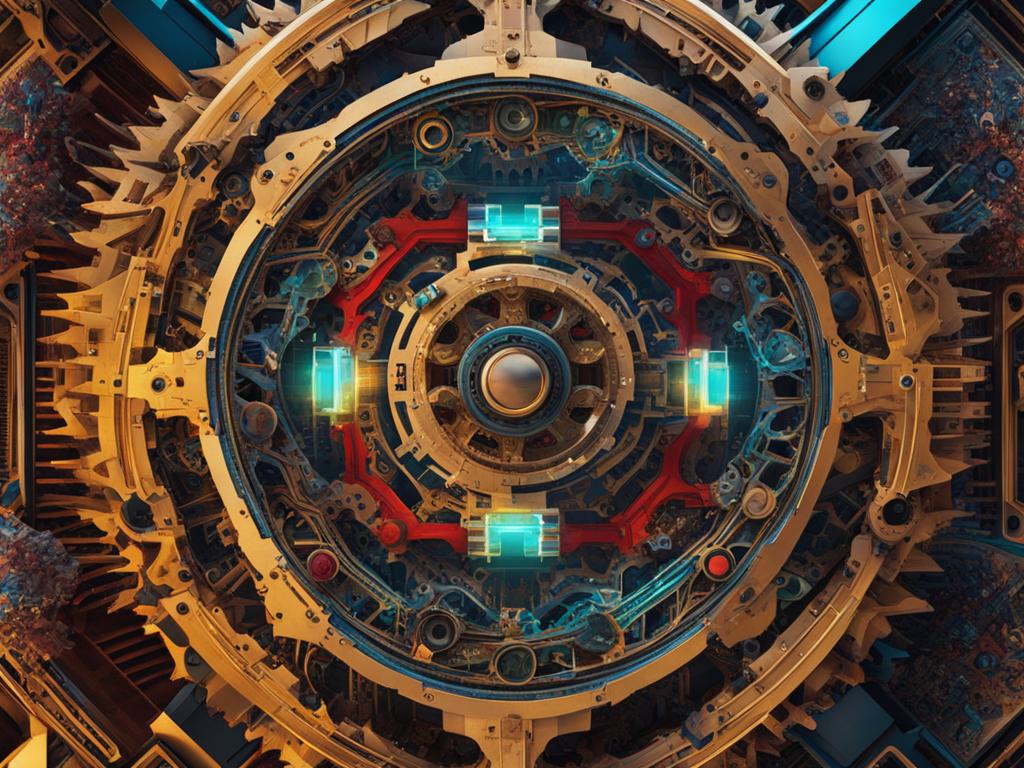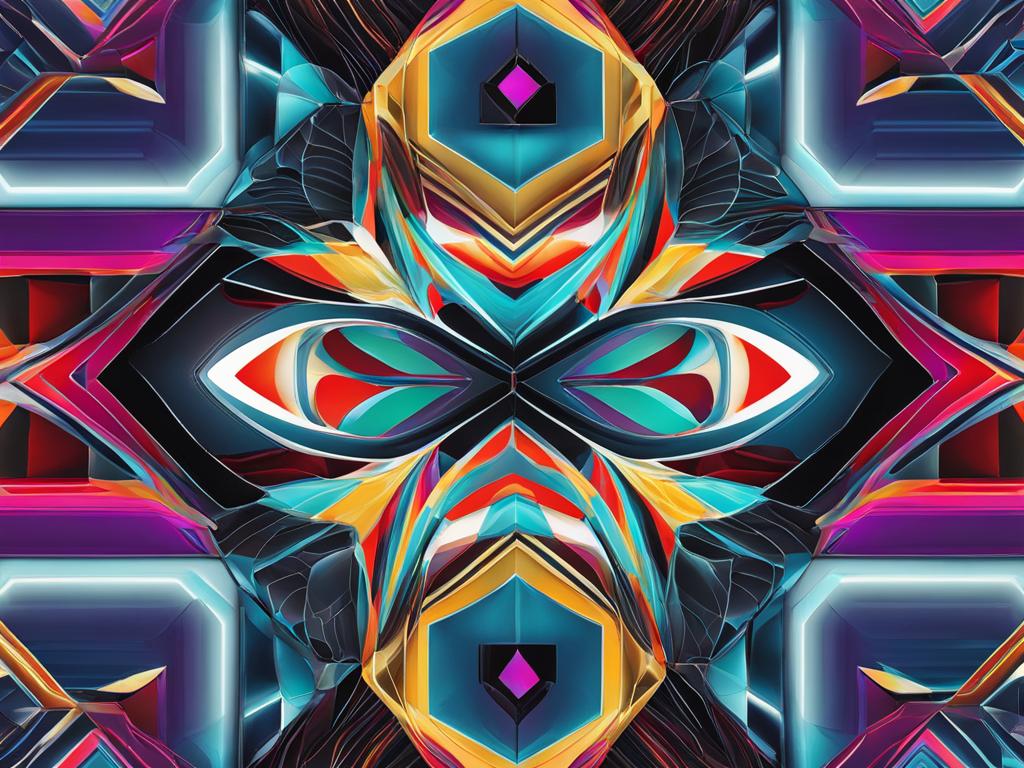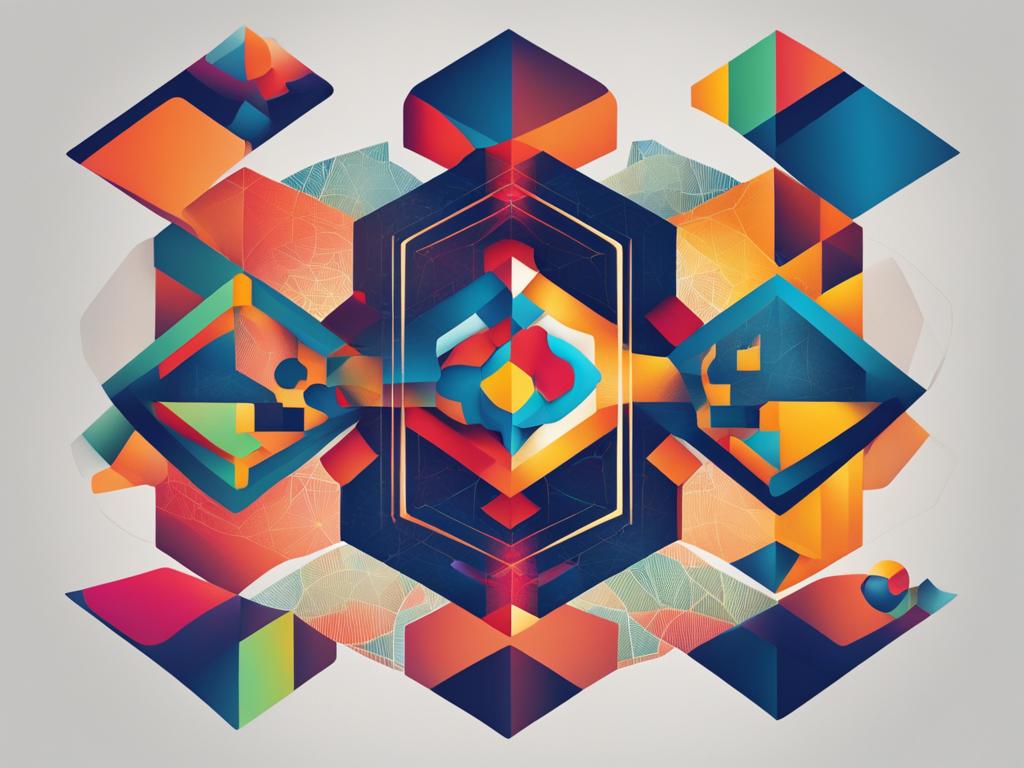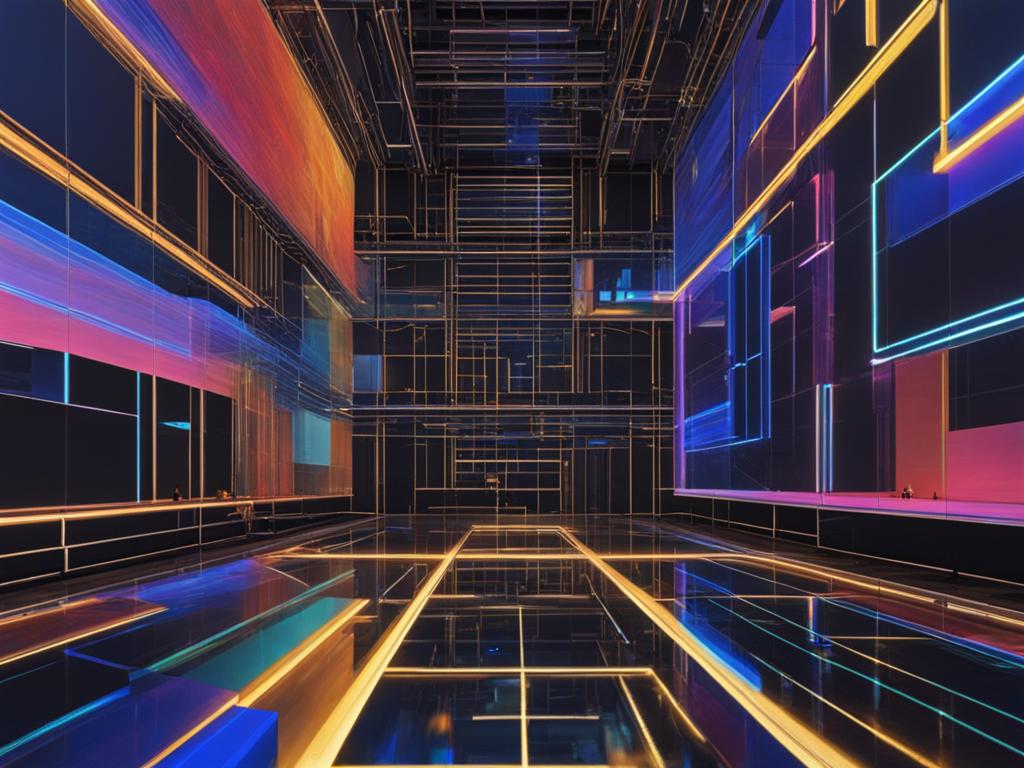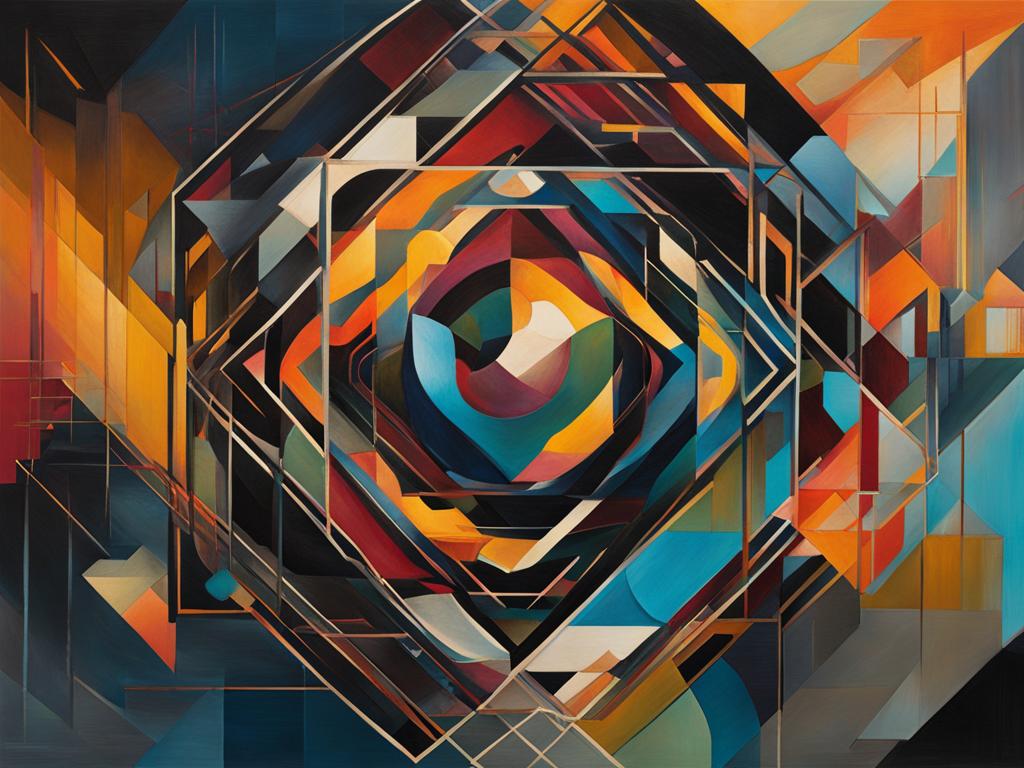As an artist, I’m always seeking new ways to push the boundaries of creative expression. With machine learning, I’ve found a medium that allows me to merge my artistic vision with cutting-edge technology. The combination of machine learning and artistic design has paved the way for new types of creativity, and the possibilities are endless.
In this article, I will explore the concept of machine learning in art and design and how it has redefined artistic creation. From the impact of AI algorithms in the art world to the techniques for integrating machine learning into the artistic process, we’ll delve into the innovative ways that artists and designers are using technology to transform traditional art forms.
Through case studies and discussions of key artists at the forefront of the machine learning art movement, I aim to provide insight into the future of art and design and the exciting possibilities that lie ahead.
The Impact of AI Algorithms in the Art World
Artists have always been adept at harnessing new technologies to expand their creative horizons. From the invention of the camera to the rise of digital art, breakthroughs in technology have consistently impacted the way artists approach their craft. In recent years, the field of machine learning has emerged as a powerful tool for artistic expression, providing new opportunities for creative exploration and experimentation.
One of the most significant impacts of machine learning in the art world is the ability to generate entirely new forms of artistic expression. Through the use of deep learning algorithms, artists can create art that goes beyond traditional human capabilities, yielding results that are both unexpected and captivating.
Moreover, machine learning algorithms can be used to augment and enhance traditional artistic processes. For example, these algorithms can be used to analyze vast amounts of data, identifying patterns, and generating insights that can inform an artist’s work. This approach has yielded impressive results, pushing the boundaries of what is possible in terms of creative expression.
The potential of machine learning to impact the art world is not limited to artists alone. Other stakeholders, such as museums and galleries, are also exploring the technology’s potential. For instance, machine learning algorithms can be used to analyze vast collections of data, allowing curators to better understand and contextualize art pieces. Additionally, some museums are experimenting with using machine learning to generate new works of art, further blurring the lines between artistic production and technological innovation.
As machine learning continues to evolve, it’s clear that its impact on the art world will only continue to grow. Through the fusion of machine learning and artistic expression, artists and technologists are pushing boundaries and redefining what it means to create a work of art.
Redefining Artistic Creation with Machine Learning
Machine learning is introducing new methods and techniques for artists and designers to create innovative works of visual art. By incorporating machine learning algorithms into the artistic process, traditional methods of artistic expression are being redefined.
Machine learning for visual arts is a revolutionary tool for artists and designers of all backgrounds. From painters and sculptors to graphic designers, this technology is having a profound impact on the creative industry.
One key example of machine learning for artists and designers is the use of image recognition algorithms. By training algorithms to identify specific visual cues, artists and designers can generate new and unique artistic creations. Image recognition technology provides a unique opportunity for designers to push boundaries and create visually captivating works of art.
Moreover, generative adversarial networks (GANs) are a groundbreaking technique in which two AI models work together to generate images, sound, or text. This technique is being employed by artists and designers to produce novel, cutting-edge art and design that can transcend traditional boundaries.
The possibilities for artists and designers using machine learning are endless. As technology advances, more opportunities for machine learning in art and design will emerge, leading to even more innovative works of visual art.
Key Artists at the Forefront of Machine Learning Art
Machine learning is rapidly transforming the art world, and key artists are at the forefront of its integration in their creative practices. These visionary artists are exploring the boundaries of traditional artistic disciplines, pushing the limits of what can be achieved through the fusion of technology and artistic expression. Let’s take a closer look at some of the key artists who are making a significant impact on the field of machine learning art and design:
| Artist | Notable Works |
|---|---|
| Mario Klingemann | Frieder Weiss |
| Anna Ridler | The Semblance Archives |
| Trevor Paglen | Training Humans |
Mario Klingemann, known for his groundbreaking work in AI-generated art, describes the process of integrating machine learning in his creative process as a “dance” between himself and the algorithm, a symbiotic relationship between the artist’s vision and the machine’s capabilities.
Other notable artists using machine learning techniques in their work include Sougwen Chung, Memo Akten, and Refik Anadol. These artists are redefining traditional artistic disciplines and forging new paths towards the future of artistic creation.
Techniques for Integrating Machine Learning in Art and Design
Integrating machine learning in art and design requires utilizing a variety of techniques and tools to achieve innovative and original results. One such technique is the use of generative adversarial networks (GANs), which enable artists to generate new and unique images by training AI models on large datasets.
Another technique is the use of image recognition algorithms, which can be trained to identify specific objects or features in an image and alter them in creative ways. For example, a designer might use image recognition algorithms to automatically detect and modify color palettes within photographs, resulting in vibrant and aesthetically appealing designs.
Additionally, data visualization techniques provide a powerful means of exploring and interpreting complex data sets through the use of machine learning algorithms. Combining these techniques with traditional design tools can lead to visually stunning and informative works of art and design.
“By leveraging AI algorithms and techniques, artists and designers are able to push the boundaries of what’s possible in terms of artistic expression and creativity.”
Exploring Future Trends in Machine Learning Art and Design
As machine learning continues to evolve, its impact on the art and design world is becoming increasingly profound. There are many emerging trends and technologies that hold the potential to shape the artistic landscape in the years to come. In this section, I will discuss several future trends that are expected to have a significant influence on machine learning art and design.
| Trend | Description |
|---|---|
| Collaborative AI | Collaboration between humans and AI will become more seamless, enabling artists and designers to fully leverage the capabilities of machine learning algorithms in their creative work. |
| Generative Networks | The use of generative networks, which can autonomously generate new data, will become more widespread in the art world. |
| Interactive installations | Interactive installations will become more immersive, offering viewers a unique and personalized experience. |
| Customized training data | The ability to create customized training data will become more accessible to artists and designers, making it easier to implement machine learning algorithms in their creative work. |
As these and other trends continue to emerge and develop, machine learning will increasingly become an integral part of art and design. From new forms of expression to novel ways of interacting with art, the impact of machine learning on the artistic world is sure to be profound and far-reaching.
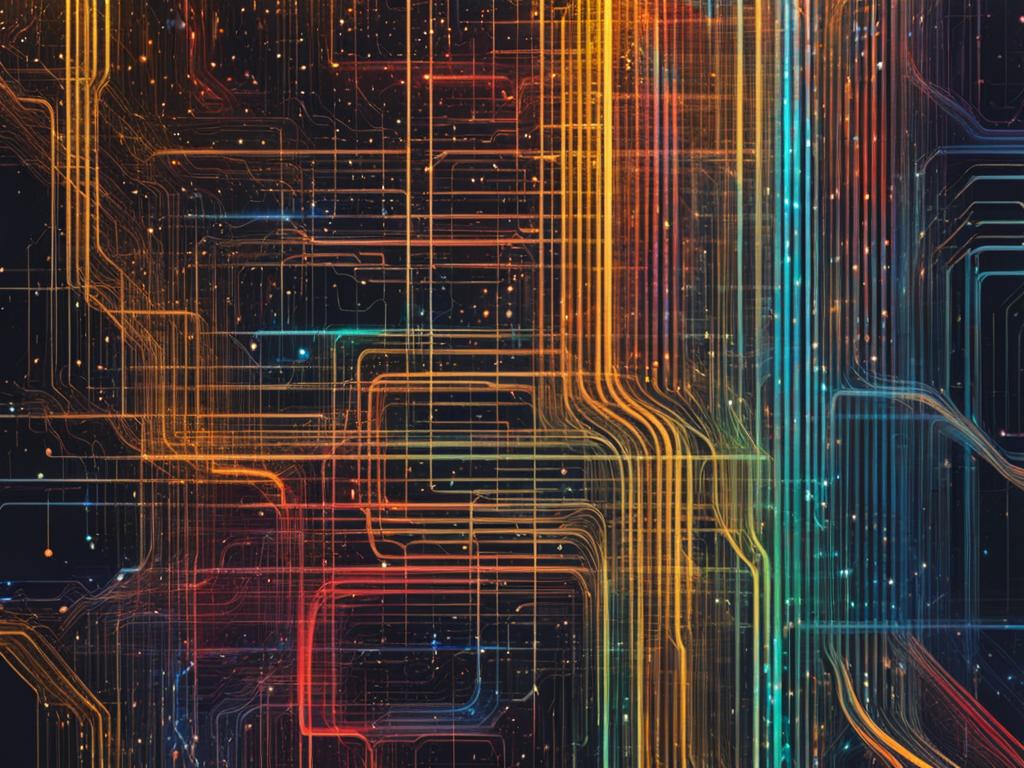
Pushing Boundaries: Machine Learning in Experimental Art
Machine learning algorithms have enabled artists and designers to create unique and unconventional works in experimental art forms. The fusion of technology and creative vision has resulted in exciting new possibilities that push the boundaries of traditional artistic practices.
Interactive installations are one of the most exciting forms of experimental art that utilize machine learning algorithms. These installations can engage the viewer and respond to their movements and behavior in real-time, creating a dynamic and immersive experience. Some notable examples include the “Rain Room” by Random International and “Scenocosme” by Gregory Lasserre and Anaïs met den Ancxt.
“In experimental art, the intersection of machine learning and artistic expression allows for the creation of interactive installations that expand upon the traditional boundaries of art. These works enable new and immersive experiences that would not be possible with traditional artistic media.”
Another fascinating form of experimental art that integrates machine learning is algorithmically-generated artworks. These works are created entirely by algorithms that learn from and evolve based on various inputs. Some noteworthy examples include the AI-generated art by Robbie Barrat and the generative algorithmic art by Cyril Diagne and Béatrice Lartigue.
These experimental artworks challenge viewers to question the boundaries of traditional artistic processes and to explore the creative potential of machine learning in art and design. As talented artists continue to push the boundaries of what is possible in experimental art, we can only imagine what groundbreaking works of art will emerge in the future.
Ethics and Considerations in Machine Learning Art
As with any development in technology, integrating machine learning in art and design raises concerns and questions about potential ethical implications in artistic creation. One of the key concerns is the potential impact on authenticity and authorship. With the use of algorithms in the creative process, determining who should be credited as the primary artist or designer can become more complex. Additionally, there is a concern that machine-generated art could take away from the value and recognition given to human-driven artistic endeavors.
Another consideration is privacy. Some machine learning algorithms use consumer data to generate artwork, which can raise concerns about who has access to that data and how it is being used.
However, proponents of machine learning in art and design argue that the benefits of experimentation and innovation outweigh these concerns. They contend that integrating machine learning in creative processes can lead to fresh and unique creations that would not have been possible without this technology.
“Machine learning is revolutionizing the way we approach the creative process, and it’s important to be mindful of potential ethical implications. As we continue to explore the possibilities of this technology, we must ensure that we are approaching it ethically and transparently.”
In conclusion, it is crucial to consider the many ethical implications surrounding the use of machine learning in art and design. While it is an exciting and groundbreaking development, we must be thoughtful in our approach to ensure that we are respecting the principles of art and design while utilizing the cutting-edge technologies at our disposal.
Case Studies: Successful Applications of Machine Learning in Art and Design
In recent years, the integration of machine learning and artistic expression has led to groundbreaking creations that explore the intersection of technology and art. In this section, I present case studies that highlight the diverse and successful applications of machine learning in art and design.
Project 1
One example of the artistic application of machine learning is the project by artist Trent Green and programmer Chris Krycho titled “Postcards from the War”. In this project, the duo used machine learning algorithms to generate new and original postcards that portray scenes from World War I. The algorithm was trained on a dataset of historical images, which allowed it to generate new postcards that are highly realistic and evocative.
Project 2
Another successful case study is the “Gauguin AI” project by George Cann and Vincent Fournier. In this project, the duo used machine learning to analyze and classify the works of Paul Gauguin, a French post-impressionist artist, and then trained a neural network to generate new artworks in Gauguin’s style. The resulting works are highly realistic and display a deep understanding of Gauguin’s artistic style, while at the same time being completely original.
Project 3
The last case study I will discuss is the “A.I. Experiments” project by Google. This ongoing project showcases a range of machine learning experiments focused on artistic expression, with a focus on interactive installations and experiences. The project includes a music creation tool that generates new songs based on user input, an image recognition algorithm that turns drawings into 3D models, and a “Quick, Draw!” game that trains a neural network to recognize user-drawn doodles.
These case studies demonstrate the vast potential of integrating machine learning into artistic practices, paving the way for new and innovative creations that blur the lines between technology and creativity.
Machine Learning Tools for Artists and Designers
As machine learning continues to revolutionize the art and design world, there are a variety of tools and platforms available to artists and designers to seamlessly integrate AI algorithms into their creative process and elevate their work to new heights.
One popular tool is Google’s DeepDream, which utilizes deep learning neural networks to transform images into surrealistic and dream-like compositions. Artists can experiment by uploading their own images and manipulating the parameters to generate unique and unexpected results.
For designers interested in utilizing machine learning for typography, we recommend the TensorFire tool which uses a machine learning algorithm to predict and adjust font weights and sizes in real-time. This tool can help designers optimize typography and create compelling visual compositions.
Additionally, the ArtBreeder platform allows artists and designers to combine and evolve existing artworks, generating entirely new pieces using machine learning algorithms. ArtBreeder facilitates artistic exploration and pushes the boundaries of traditional artistic disciplines.
These are just a few examples of the many machine learning tools and platforms available to artists and designers. By embracing the potential of artificial intelligence, creatives can broaden their perspective and achieve innovative and captivating works of art.
The Collaborative Potential of Machine Learning in Art and Design
Machine learning and creative design are two fields that, at first glance, may seem unrelated. However, the integration of these two disciplines can unlock immense creative potential and push the boundaries of artistic expression. One exciting aspect of this integration is the potential for collaboration between artists, designers, and technologists.
Through collaboration, individuals with a diverse set of skills and expertise can come together to create interdisciplinary projects that merge cutting-edge technology with artistic expression. By leveraging machine learning algorithms, artists and designers can experiment with new forms of creative expression, while technologists can explore novel applications of their expertise in the context of the arts.
One example of the collaborative potential of machine learning in art and design is the AI-powered music project, AIVA. Created by a team of composers, programmers, and designers, AIVA is an artificial intelligence that uses machine learning algorithms to compose original music. By combining the expertise of programmers and composers with the creative vision of designers, AIVA demonstrates the transformative power of interdisciplinary collaboration.
Another example is the AI art project, Obvious. Founded by a collective of artists, Obvious combines machine learning algorithms with traditional artistic techniques to create captivating digital artworks. By bringing together artists and technologists, Obvious demonstrates how machine learning can be used to create new forms of artistic expression.
These examples highlight the potential for collaboration between machine learning and art and design. By working together, artists, designers, and technologists can create transformative projects that push the boundaries of traditional artistic practices and explore new frontiers in the creative world.
Conclusion: The Future of Machine Learning Art and Design
In conclusion, the fusion of machine learning and artistic creation has resulted in groundbreaking innovations and possibilities. The impact of AI algorithms on the art world has been nothing short of transformative as it continues to redefine traditional artistic processes and push boundaries in terms of creativity and expression.
The key to successfully integrating machine learning in art and design lies in exploring the various techniques and tools available to artists and designers. By leveraging these tools, creative professionals can create captivating works of art that merge cutting-edge technology with artistic expression.
As we look to the future, it is clear that advancements in machine learning will continue to influence and transform artistic practices. Exploring emerging trends and technologies will be crucial in enabling artists and designers to stay on the forefront of innovation and push the limits of what is possible in creative design.
Furthermore, the collaborative potential of machine learning and art and design is immense. By working together, artists, designers, and technologists can create transformative and interdisciplinary projects that merge cutting-edge technology with artistic expression.
In the end, the future of machine learning art and design is bright and full of possibilities. As we continue to explore the creative potential of these innovative technologies, we can expect to see a new era of artistic expression and exploration that merges the best of man and machine.

